No. 1, the Thames
- Paul Dobraszczyk
- Sep 22, 2016
- 4 min read
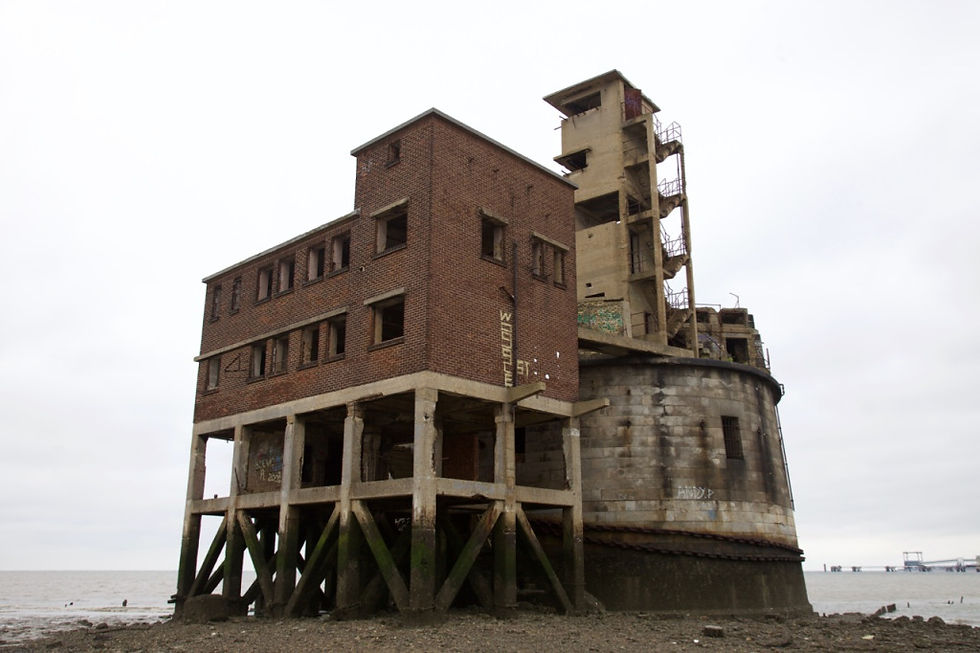
When the Grain Tower – located just off the northeastern coast of the Isle of Grain in Kent – was advertised for sale in 2013, the property website Rightmove listed it as ‘No. 1, the Thames’, an almost irresistible address for a would-be-buyer with a penchant for the outlandish and unique. Effectively a tidal island, the Grain Tower was constructed in several stages, the earliest part being an oval-shaped stone tower for gun emplacements, completed in 1855 when fears about a French invasion were stoked by imperial competition between Britain and its neighbour. Repurposed as a communications tower in the early 20th century, the outbreak of the Second World War saw the structure transformed once again, with a new concrete roof and tower constructed to hold much larger guns as well as a barracks to house the gun detachment, the living quarters connected to the tower via precarious concrete catwalks. As with many Second-World War defensive structures, like the nearby Maunsell Sea Forts further out in the Thames estuary, the Grain Tower was decommissioned in the 1950s, thereafter slowly decaying whilst being periodically considered for other uses. In 2005, a private owner purchased it from the Crown Estate, but he put it up for sale again in 2010 – hence the Rightmove listing – with a new anonymous owner eventually settling for the sum of £300,000 in 2014.
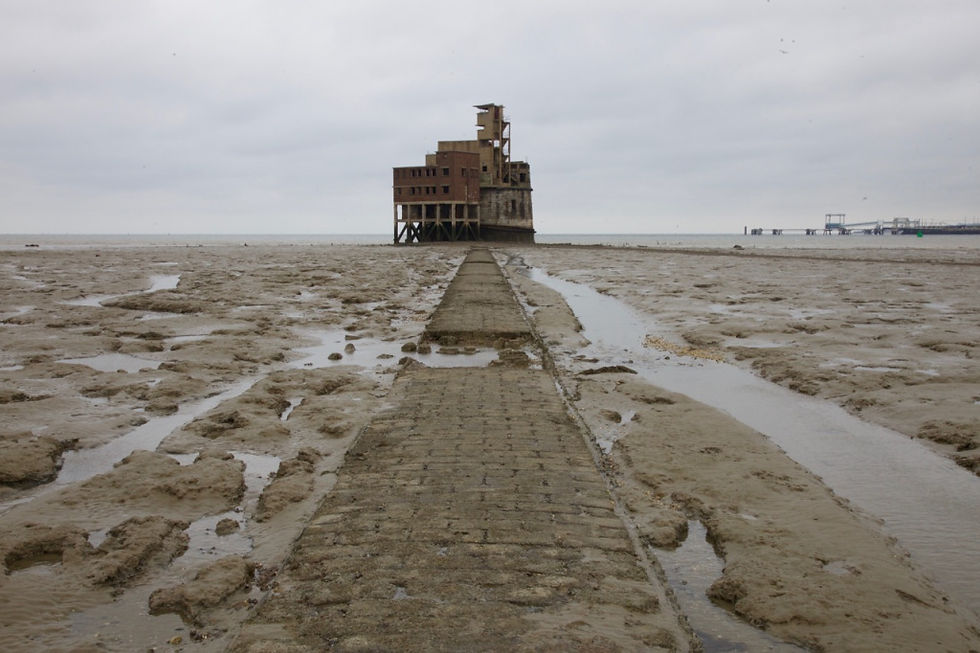
View of the Grain Tower from the tidal causeway
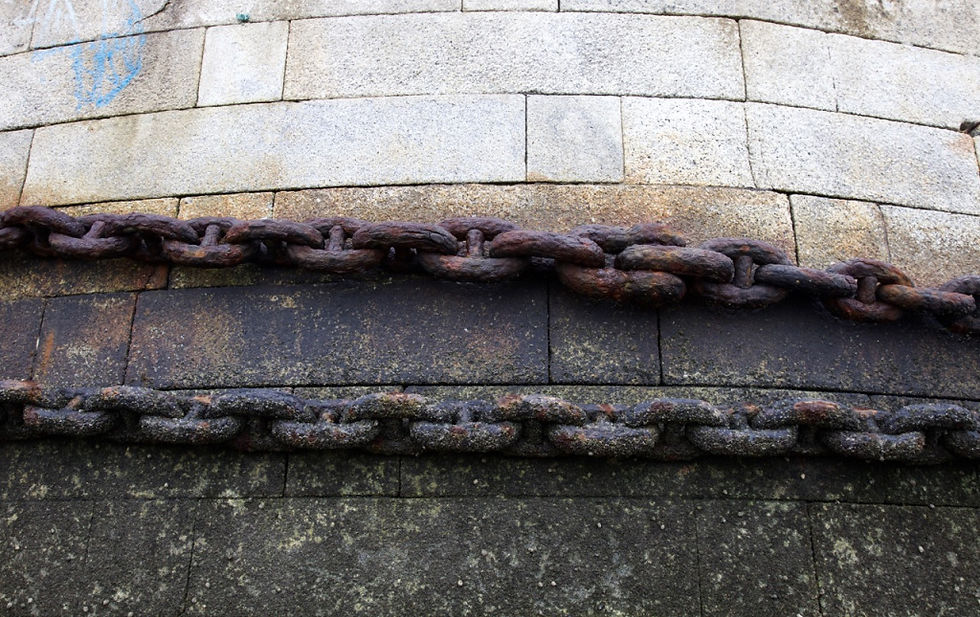
Iron chains connected the Tower to the boom in the estuary
For a private property, the Grain Tower is surprisingly easy to access. If you’re intending to get to it by foot you must wait for the tide to recede and then follow the 500-metre causeway from the north-eastern tip of the Isle of Grain out to the Tower. It’s an exposed site – when I visited in early June this year, it was overcast, cold and windy, while the connecting causeway is comprised of sharp rocks and slippery bricks – hard on bare feet as I discovered. The Tower itself, diminutive when viewed from the shoreline, becomes ever-more commanding as one approaches it. The enormous iron chains around the 19th-century stone base, which secure the estuarine boom to the Tower, provide an immediate visual sign of security. As with all towers, there’s also a strong vertical emphasis; the four storeys that jut out from the top of the original tower lend the structure a vertiginous quality, heightened by the open concrete stairwells that are almost ceaselessly buffeted by winds. The circular gun placements are testament to the Tower’s lost function, even as, without their weaponry, they now provide stunning viewing platforms for the curious visitor.

Interior of the oldest part of the Tower, dating from 1855
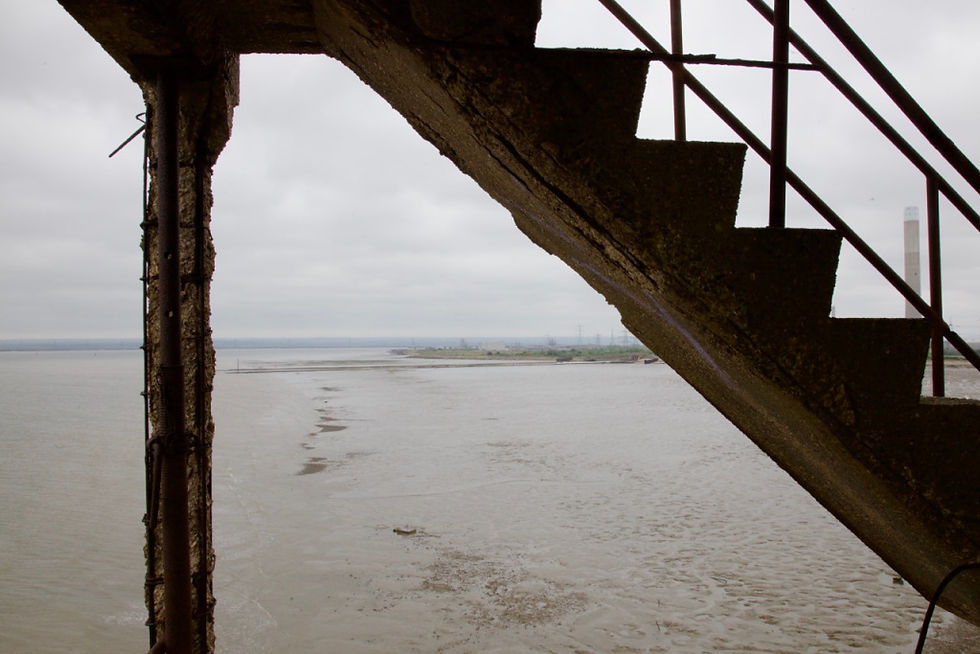
Concrete stairwell in the upper section of the Tower
The Grain Tower is an unusual example of an architectural tidal island – there are many natural ones dotted around Britain’s coastline but very few that are human-built, bar lighthouses. Like all tidal islands, the Grain Tower bestrides both land and sea – a massive, inviolate presence in an otherwise ceaselessly-changing environment. The Tower’s seeming impregnability has inspired some to imagine it as an ideal refuge in a post-apocalyptic future. In a recent symposium, ‘Science Fiction meets Architecture’, held at University College London, the science-fiction novelist Kim Stanley Robinson and architect Usman Haque were invited to imagine London in 2080, when sea levels might have risen by anything up to 5 metres. Having considered purchasing the Grain Tower when it was up for sale in 2013, Hague argued that the site would become extremely desirable in the future if the Thames’s tidal waters were to submerge large areas of London. In his talk, illustrated with his design proposals, Haque imagined having bought the Tower and then, in the flooded future, sharing it with others as the structure became completely marooned from the land. Developing into a self-sufficient utopia, the countercultural Tower community would source all of its energy from renewables and hydraulic power, grow its food from locally-sourced algae, and keep virtual pets as companions in order to make sense of the new environment.
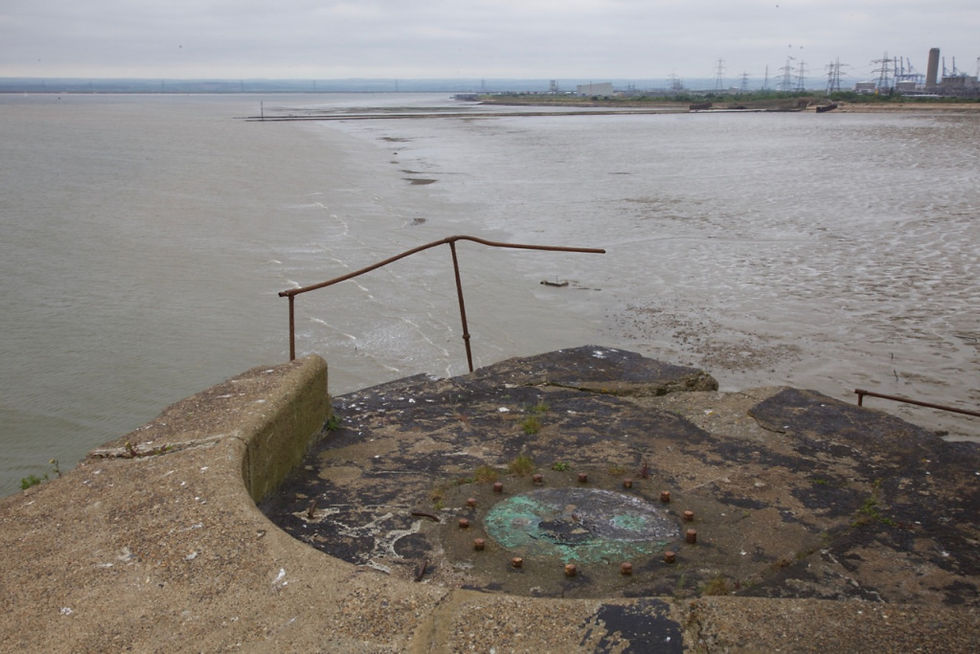
Second-World-War gun placement on the upper level of the Tower
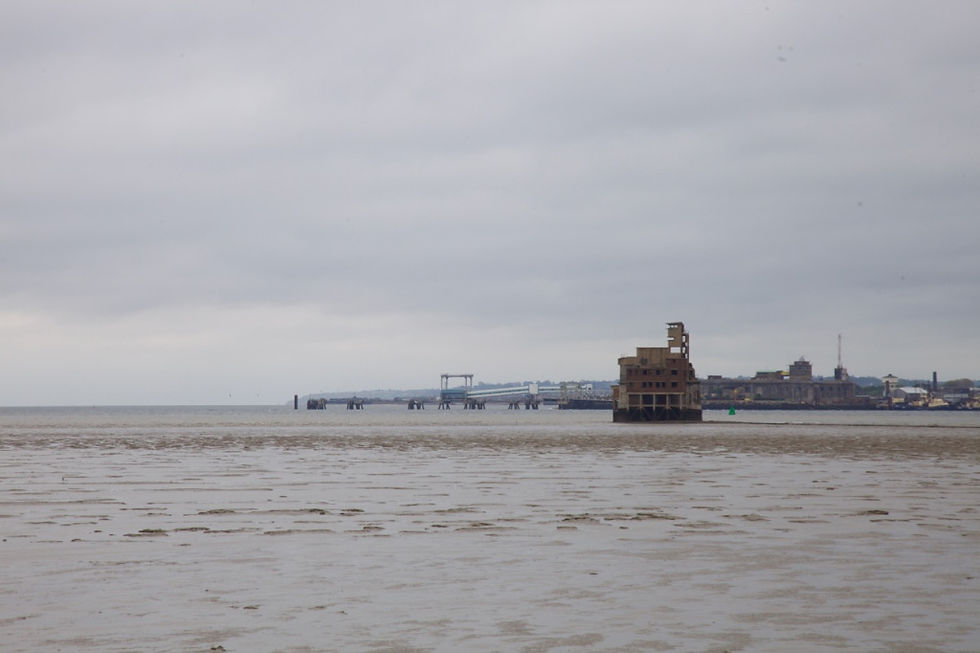
The Grain Tower at high tide from the mouth of the River Medway
Haque’s speculative transformation of the Grain Tower demonstrates how a structure that was conceived and built entirely for military purposes can be reimagined in a wholly new way. His future utopian community may take advantage of the Tower’s impregnable structure and isolated location, but it would do so in the name of socially-progressive ideals rather than imperial paranoia. It’s as if the Tower’s ruinous state today and indeterminate status offer up much richer possibilites for reuse than those suggested by Rightmove when the Tower was up for sale – the website effusively stated that it ‘could be transformed into almost anything: a private residence, an off shore hotel, outdoor pursuit centre, film location, nightclub, casino to name a few!’.
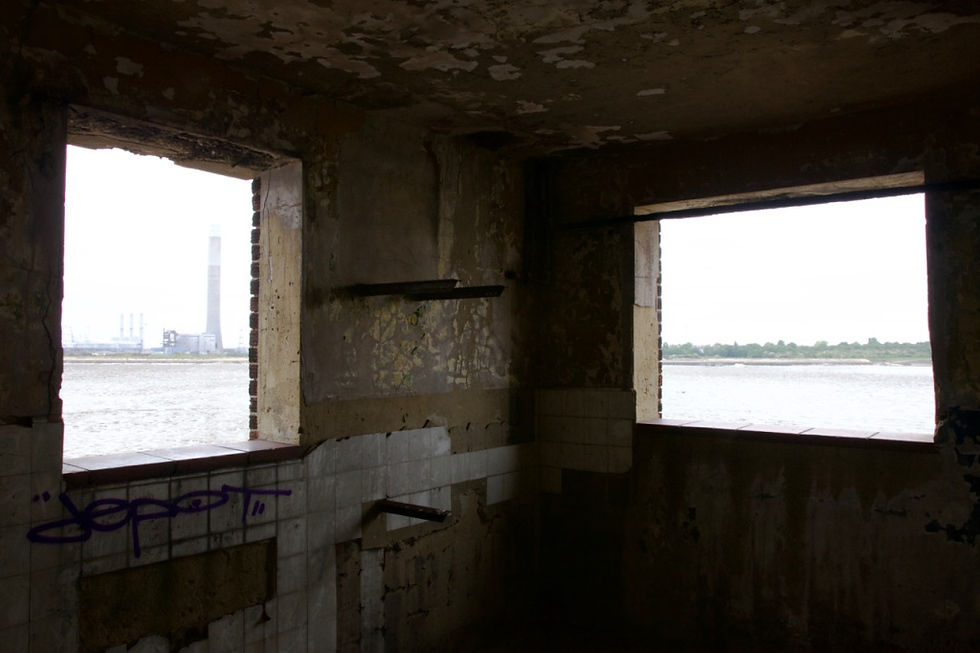
View of the Isle of Grain for the former barracks
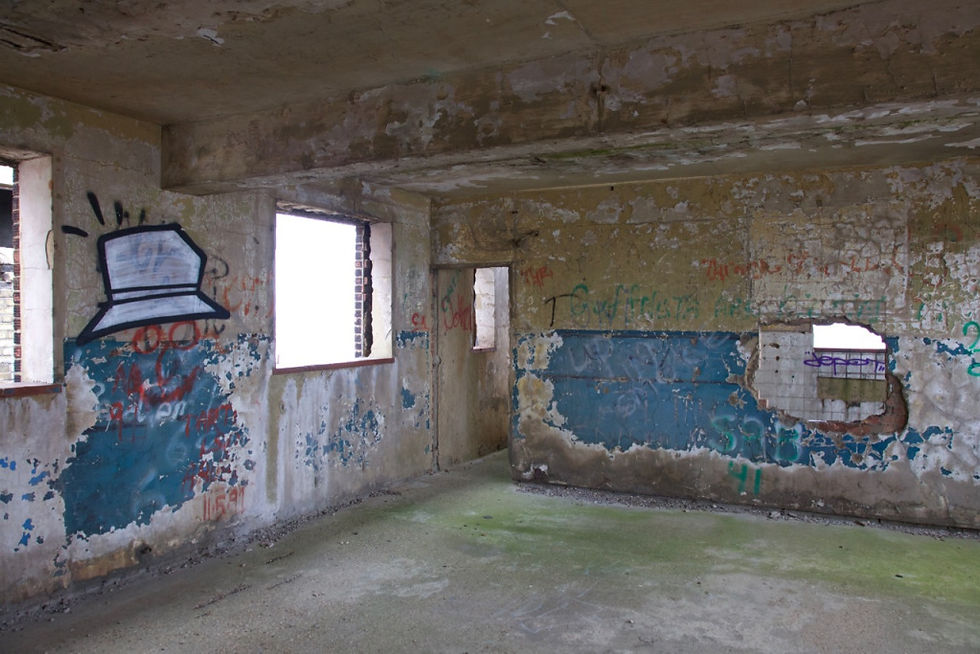
Modern graffiti inside the barracks
Yet, in at least one sense, a transformation has already happened on the derelict Grain Tower. The omnipresent graffiti on the Tower’s walls is evidence of inhabitation by many different visitors over the years. Recently, the urban explorer and academic Bradley Garrett, together with a group of friends, took over the Tower for a long summer weekend – not the first time he has spent extended time on this structure. On a previous visit, he spoke of his feelings of safety and security that stemmed from being cut off by the tide, as well as the group’s idling away of the time between the tides, listening to music, drinking whisky and sunbathing on the former gun placements. A short-term utopia no doubt, but a better one than that which awaits the Tower once the current owner decides to enforce its new status as a private property. Or perhaps he won’t and we can continue to imagine and inhabit it in other ways.



Comments